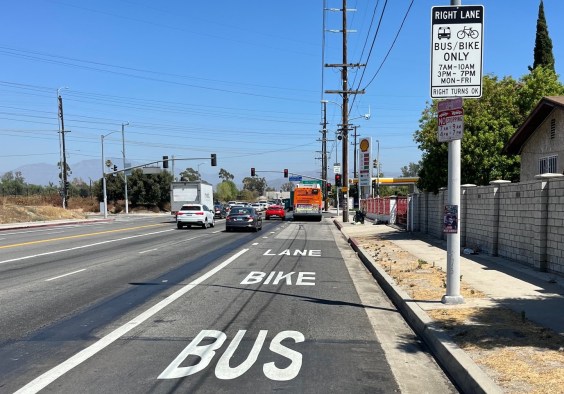Humboldt County, best known as the “Home of Redwoods” and picturesque beaches, may also be the home of one of the largest victories for transportation reform in the state in 2025.
Last Fall, Humboldt County voters passed Measure O, a one-cent sales tax to fund transportation: road repair, public transportation, and maintain evacuation routes for the next five years. Called a “911 for roads” the measure was framed as a way to cut emergency response times and county officials are not shy when describing the need.
“Our roads absolutely suck right now,” County Supervisor Rex Bohn commented at a recent board meeting.
This Spring, the county supervisors voted to spend 15% of the $24 million generated annually by the sales tax on transit. 5% of the funds will go towards Complete Street Projects. This is the first time that Humboldt County has created a dedicated funding stream for transit operations.
“It’s a big deal for us,” exclaimed Colin Fiske, executive director of local advocacy group Coalition for Responsible Transportation Priorities (CRTP.) When county officials first proposed a sales tax nearly two years ago, the discussion was completely around the poor road conditions. It was only through years of advocacy from CRTP and other residents that a set-aside for transit and active transportation was achieved.
Transit
The timing of the influx of local money comes at a crucial time for the Humboldt Transit Authority (HTA), as operations funding for transit agencies is at a critical point across the state. To further complicate matters, HTA receives a substantial portion of its operating dollars from the federal government.
In the past several months, USDOT Secretary has threatened to pull funding for projects that are “woke” or “DEI.” Despite the definitions of those terms having absolutely nothing to do with transportation, Duffy and his superiors clearly are just using those terms to mean “things that aren’t promoting driving gas powered vehicles.”
In addition, the federal government has also threatened to withhold funding to states that do not aid in immigration enforcement efforts. Courts have ruled those efforts illegal.

Governor Gavin Newsom unveiled his revised budget for the fiscal year beginning on July 1, and it did not include any funding to backfill unmet federal expectations and even cut funding for some transit programs.
“Obviously, we want to see more transit service. We voted for more transit service. But if we have to use that money to maintain current service (because of federal and state cuts), at least we won’t be cutting service,” Fiske continued.
Roads and Complete Streets
Usually, a transportation tax that puts 80% towards road projects that aren’t complete streets projects would not be celebrated by advocates. But to be fair to Humboldt County’s political leadership, the roads are in really bad shape.
And according to Humboldt County’s own website, without the infusion of funds from Measure O, it was going to get worse.
A recent study found that we have some of the worst pavement conditions in the state – with more than 50% of county roads rated “poor” or “failed.” At current levels of funding, most county roads will be rated as “failed” by 2033 – including letting some turn back into gravel.
The roughly $1.2 - $1.5 million for “complete streets” is sorely needed.
“Much of the county’s road system consists of narrow, low-traffic, rural roads in remote, rugged terrain, and although people do walk and bike in those places, there’s not much chance of getting a bike lane or a sidewalk,” said Fiske. “But there are also unincorporated town centers and suburban streets under county jurisdiction where the need for bike and pedestrian safety upgrades is clear and pressing.”
Funding from Measure O can only be used on county roads and unincorporated portions of Humboldt County, which excludes most of the roads in the larger cities of Eureka and Arcata. However, over 16,000 people live in McKinleyville which is in a planning process for a new city center. The current planning for the city center relies on Level of Service analysis, a measure Caltrans began the long bureaucratic process of abandoning in 2014, and officially scrapped in 2022.
CRTP recently submitted comments on the plan that outline the dangers of LOS planning. Perhaps the Measure O set-aside will give county leaders pause to consider the opportunities of creating a city center that is truly pedestrian oriented.






